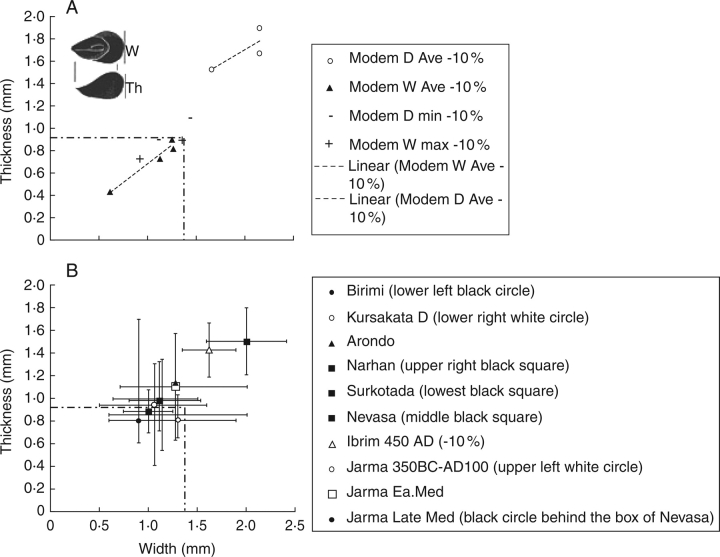Fig. 15.
Scatter plots of pearl millet (Pennisetum glaucum) grain width vs. thickness. (A) Modern population averages and minima of domesticated populations reduced by 10% to account for shrinkage, compared with modern wild population averages with maxima, reduced by 10%. Dashed line indicates expected separation between wild and domesticated forms. Sources: Brunken et al. (1977) and Zach and Klee (2003). (B) Plots of archaeological site averages and ranges. Early West Africa averages (Birimi, 1700–1500 BCE; Kursakata, 1500–800 BCE) fall in the wild zone although ranges extend into the larger domesticated zone. The earliest finds in India (Surkotada, approx. 1700 BCE) are close to these as are Early Historic (200 BCE–300 CE) Nevasa in southern India. North Indian Narhan (1400–800 BCE) shows a marked shift towards larger sizes comparable with modern domesticates, as does early medieval Qasr Ibrim (Egypt, approx. 450 CE: this find is preserved by dessication and has been reduced to be comparable with carbonized material). Jarma in south-west Libya may show an apparent shift towards somewhat larger grains during the early first millennium CE, comparable with the size found in medieval Senegal at Arundo. Later Medieval Jarma has shifted back towards to near wild size range. Sources: Kajale (1977), Steele and Bunting (1982), Chanchala (1995), Saraswat et al. (1994), D'Andrea et al. (2001) and Zach and Klee (2003) (Jarma data from Ruth Pelling, personal communication).

